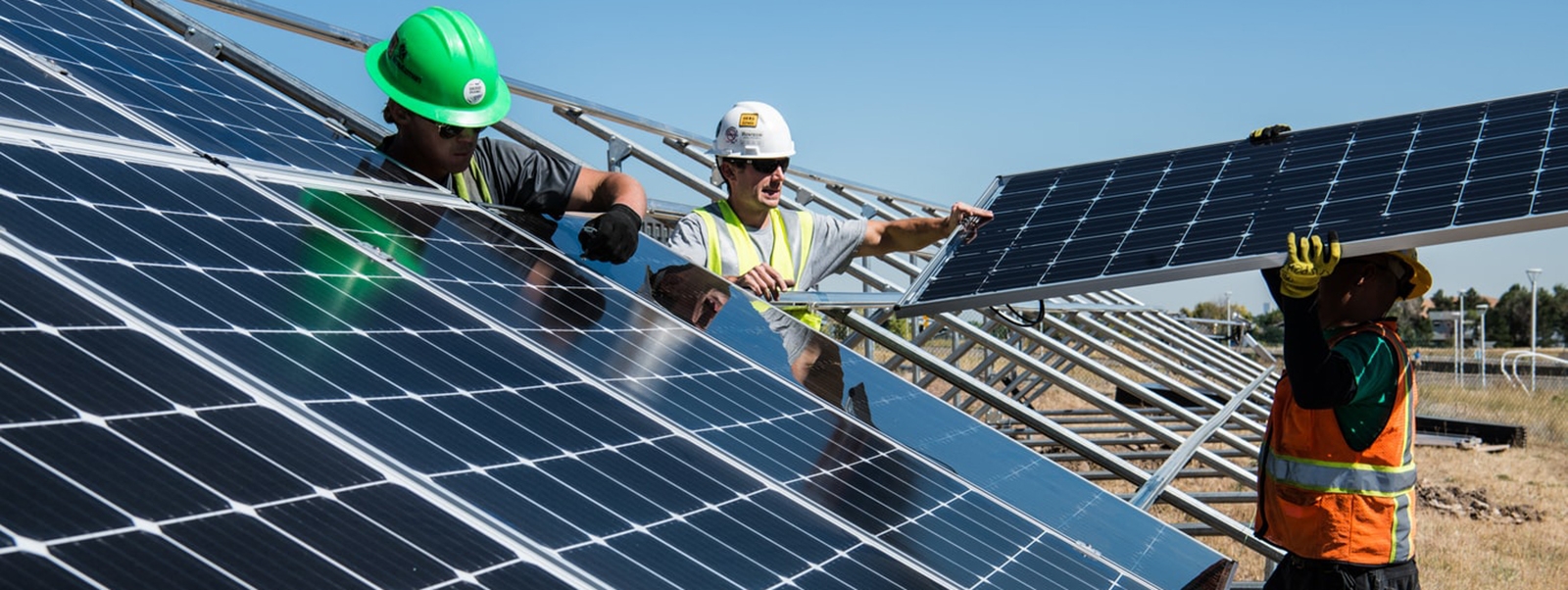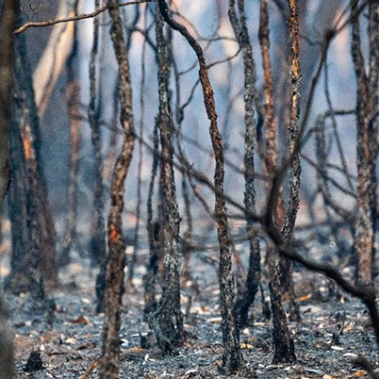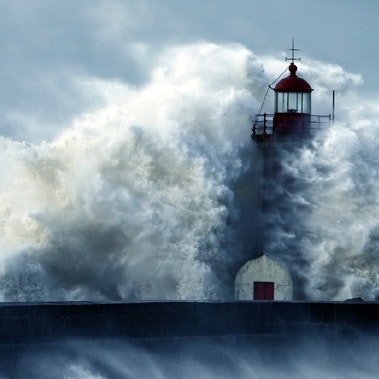This article first appeared in European Risk Management Council - Risk Landscape Review in March 2020.
Climate change poses a major risk – one that is already impacting the lives and finances of many. The latest Global Risks Report from the World Economic Forum released in January 2020, only confirms its critical importance. The impact of climate change is global, and with far reaching consequences. Events such as the bankruptcy of the Pacific Gas and Electric Company (PG&E) in January 2019, the historic water shortages in South Africa, and the recent announcement by the Indonesian government to move its capital from Jakarta, all illustrate that the impact is also directly financial.
Climate change is one of the most—if not the most—pressing challenge of our times. There are wildfires raging in the Amazon, California and Australia. Thousands of people have been displaced. Homes have been lost. Species pushed to the brink of extinction. Corporations bankrupted. Large swathes of vegetation destroyed. Sea levels continue to rise alarmingly. And this is just to name just a few consequences already experienced. There is also the imminent possibility of more wildfires, student protests and the growth of movements like ‘extinction rebellion’ that can stem from the direct impacts of climate change.
Climate change will put at risk around 2 percent of global financial assets by the year 2100. A worst case scenario could see up to 10 percent of global financial assets being at risk by 2100. Such is the scale of the devastation that we should be ready for – and we need to accelerate our preparation now.
Does Climate Change merit its own category in Risk Taxonomies?
Many financial sector firms have updated their risk taxonomies in recent years to reflect the greater focus on non-financial risks such as conduct and culture, cyber and reputation. By calling them out specifically, they have sought to ensure appropriate focus and attention is given to these crucial areas which were so defining in the years running up to and after the Global Financial Crisis.
In this context, firms are asking whether Climate Change also deserves its own risk category. To this question, one view offers a purist answer and one that is more pragmatic. The purist view suggests that climate change represents a change in circumstances, such as the discovery of new technology which could render old methods obsolete. It is therefore not a risk type in itself and does not necessitate change in an organisation’s risk taxonomy. Risk taxonomies are by construction exhaustive, and any losses arising from Climate Change will (or will not) arrive and be measured and managed through existing frameworks.
By contrast, the pragmatic view is considerably different. This perspective favours calling out substantial risks to ensure they are accorded appropriate attention. This is very much the perspective which drove firms to modify their non-financial risk taxonomies and, given the scale of potential challenges arising from Climate Change, it is reasonable to ask whether the same logic applies.
The issue of course is that Climate Change is not a risk type and will affect firms across their exposures. In the context of PG&E’s bankruptcy, its bankers experienced climate change as a credit risk; for PG&E’s clients, including banks, it triggered operational risks. For PG&E’s California-based professional investors, climate change could have been a credit, market, operational and reputational risk. This breadth of impact of climate change risk from a single event well-illustrates its wide-ranging implications.
Role of Risk Executives
The sheer scale of the potential adverse impact of climate change means, whether or not it merits changing the risk taxonomy, it must feature as a line item among the key tasks for risk executives. Risk leaders will need to be in the forefront of understanding climate change risks and alerting and educating their organizations to its potential impact. In addition, they need to ensure firms define processes to manage and mitigate its consequences. This work entails understanding and measuring an organization’s portfolio exposure to climate change, including both direct financial and indirect reputational and societal components. The required expectations are well-mapped in the work of the Task-Force for Climate-related Financial Disclosures and related efforts1.
Climate change will wipe out enormous amounts of capital, and it will possibly take years to measure its impact and recover from the associated mispricing that will be revealed. There will also be – as in the case of all category-based market mispricing events – a tipping point, which in hindsight will become the moment when valuations, insurance markets, and individual and government choices all start to shift. Potentially this tipping point will be traced back as early as 2019 and the failure of PCGE.
Opportunities from Climate ChangeAlthough there is a plethora of challenges—financial and otherwise—resulting from climate change, efforts to address these challenges are resulting in opportunity.
For example, in the case of harnessing solar energy, both concentrated solar power and photovoltaics have registered falling prices and are already below $20 a GT of CO2 equivalent. Globally renewable power will on average be cheaper than coal-based power in 2020. Fully hybrid cars and LED lighting, meanwhile, are already negative costs in abatement terms – cheaper to run and carbon positive in comparison to other options. Electric cars such as the Tesla are carbon positive through whole-of-lifecycle. This has gone hand-in-hand with consumer preferences which have also evolved – this is evident considering Tesla just registered back-to-back quarterly profits for the first time at the end of 2018 and is already the most valuable auto manufacturer in the world2.
The process of solid-state refrigeration, which involves extracting gases possessing 9,000 times the greenhouse impact of carbon, is also now a reality in certain applications. Reforestation and afforestation efforts, meanwhile, are creating sources of carbon credits for developed nations to trade with developing economies. Furthermore, there is also the process of carbon capturing, sequestration and bio-sequestration. In the latter case, a basic machine can sequester as much carbon as an acre of trees and produce bio-fuel in the process.
So while the risks are immense, climate change is also presenting a myriad of opportunities. Business and the scientific community is investing towards the common goal of a cleaner planet and productive new technologies that raise efficiency at lower impact. But the need of the hour remains to press for quicker consensus and action, because the pace of change at present is too slow, and absent radical acceleration the world in 2100 is forecast to become a hot and unpleasant place3.
Room for Optimism
Banks are in a strong position to allocate resources to the next generation of energy efficient alternatives. In line with the United Nations Environment Program Finance Initiative and the Task Force on Climate-Related Financial Disclosures, major banks have already committed towards reducing their overall emissions intensity portfolio.
They have also introduced renewable energy financing schemes and have established financial incentives for low-emissions projects. Similar initiatives are being seen globally in the areas of green financing, and through the provision of financing to companies that is dependent on them meeting some climate- or emissions-related goals.
Technology provides room for optimism too. It is interesting to note that just the installation of LED lights and usage of effective insulation are enough to keep the world flat in terms of carbon dioxide emissions. Separately, plenty of work is going into enhancing energy efficiency, through improved battery storage solutions, and more efficient energy transmission and distribution. Happily, the facilitation of technologies such as these are on the agenda of several governments worldwide, with willingness to provide support for their adoption and implementation on the increase.
The technology to battle climate change is beginning to mainstream and it will be critical to facilitating the required pivot to a lower carbon economy. Nevertheless, the changes ahead will be seismic, and the associated costs of inaction will be astronomical. It therefore falls upon risk executives to assume the mantle of mitigating climate change risks, primarily by measuring the scale of the challenges faced and opportunities presented. What is required more than anything else is intent to understand the problem, and act on the opportunities.
1 https://www.oliverwyman.com/media-center/2018/may/oliver-wyman-designs-new-climate-change-methodology-with-un-and-.html
2 https://www.reuters.com/article/us-tesla-stock/tesla-overtakes-gm-as-most-valuable-us-automaker-short-sellers-burned-idUSKBN1X31NG
3 https://www.businessinsider.com/paris-climate-change-limits-100-years-2017-6




